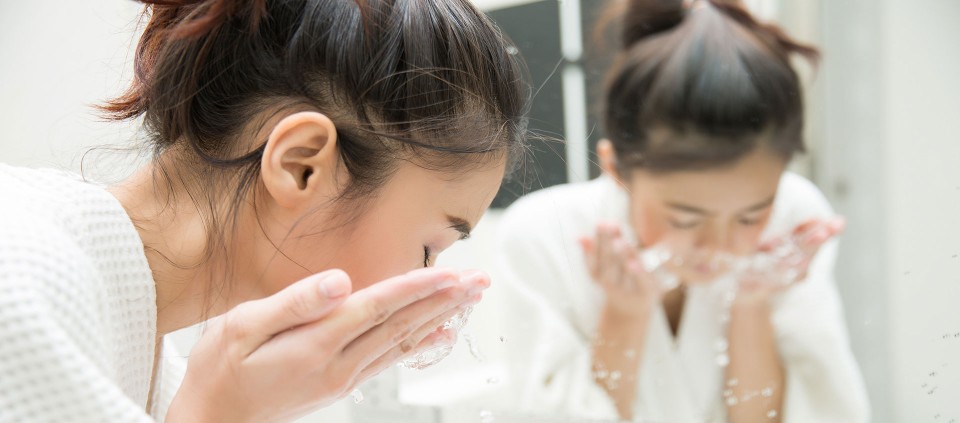An Ayurvedic Face Wash for Summer

Looking for a natural boost to your skin-care regimen? Look no further! Loaded with cleansing and rejuvenating Ayurvedic herbs, this face wash is just the ticket for sultry summer days.
Not only is the skin the largest organ of the body, but its porous nature absorbs roughly 64 percent of what we slather on. So it’s of utmost importance that what we put on our skin is high quality and of food grade. Think of your skin as ingesting and digesting the majority of what it comes into contact with.
Used in many gluten-free alternatives these days, chickpea flour is the base for our face wash. Loaded with zinc, this chemical element can help ward off infections that lead to acne. Chickpeas are astringent in nature, and aid in reducing excess oil by balancing out the skin’s sebum. Chickpea flour is also known to treat hyper-pigmentation of the skin and is commonly used in India to minimize unwanted facial hair.
Let’s take a look at the therapeutic benefits of some of the other ingredients found in this blend.
Neem powder is derived from the leaves of the neem tree. It is cooling and bitter—a perfect antidote to sweaty, sticky weather. Neem reduces inflammation of the skin, as well as acne and blackheads. This powerful leaf can be useful in alleviating psoriasis and eczema. The oil from the neem leaf is traditionally used to treat bacterial and fungal infections. Bonus: Neem oil can also be used as a natural bug repellent.
Hibiscus is highly revered in India as sacred to the beloved elephant god, Ganesha, the god of wisdom and destroyer of obstacles. I fondly think of hibiscus as the remover of the obstacle of aging skin. Aptly referred to as the “botox plant,” hibiscus packs a powerful punch. Made from the desiccated flowers, hibiscus is said to increase the elasticity of the skin, creating a stunning, youthful radiance, by inhibiting the production of the elastase enzyme.
Triphala is a Sanskrit term for a compound of three fruits: amalaki, haritaki and bibhitaki. Together, they create a tri-doshic formula that contains five out of the six tastes. Amalaki, or Indian gooseberry, is loaded with vitamin C. It is an excellent choice to combat acne, rosacea, and eczema. Chock-full of free radical Pac-men that promote the production of collagen while increasing the elasticity of the skin. Haritaki is rejuvenating and naturally tones the skin, while supporting the release of toxins from the deeper layers of tissue. Finally, bibhitaki is purifying and astringent, antibacterial and a natural cleanser. This berry increases the microcirculation of the skin, increasing blood flow to the deeper layers.
Brahmi is touted as one of the most rejuvenative herbs in Ayurvedic medicine. Full of antioxidants, this beautiful herbs helps regenerate skin cells, and can be used for chronic skin disorders, such as eczema and psoriasis. Like hibiscus, Brahmi also reduces wrinkles by increasing the production of collagen.
Together, these herbs coalesce with the chickpea flour to make a potent and effective scrub. We have tailored this blend specifically for the summer season, as the ingredients are cooling and astringent. Banyan Botanicals is a great resource for neem, hibiscus, triphala and brahmi powder. Chickpea flour can be found at most natural foods stores, co-ops, or Indian grocery stores.
1 cup chickpea flour
1 tablespoon neem powder
2 tablespoons hibiscus powder
2 tablespoons triphala
3 tablespoons brahmi
Whisk ingredients together and store in an airtight glass jar.
Daily Face Wash
- Mix with enough water to make a wet paste.
- Gently massage into skin.
- Rinse thoroughly.
- Avoid contact with eyes and skin around eyes.
Acne Remedy
- Mix with water or honey to create a thick paste
- Rub on acne spots.
- Leave on for 30 minutes.
- Wipe clean with warm face cloth.
Face Mask
- Mix with enough oil or water to make a wet paste. For vata, mix with sesame oil. For pitta, mix with rosewater or plain water. For kapha, mix with plain water. (Don't know your dosha yet? Take our quiz.)
- Gently massage into skin.
- Leave on for 15 to 30 minutes.
- Wipe clean with warm face cloth.
- Avoid contact with eyes and skin around eyes.
Discover more ways to integrate Ayurveda into your daily routines.
© Kripalu Center for Yoga & Health. All rights reserved. To request permission to reprint, please email editor@kripalu.org.
Lauren Gernady is an Ayurvedic Health Counselor, a 500-hour Ayurvedic Yoga Teacher, a graduate of the Kripalu School of Ayurvedic (KSA), and a former intern and Academic Coordinator of KSA.
Full Bio and Programs